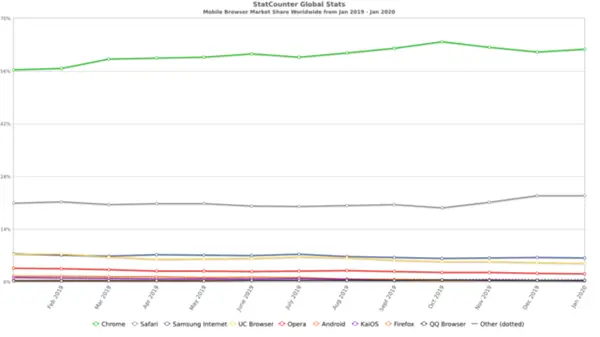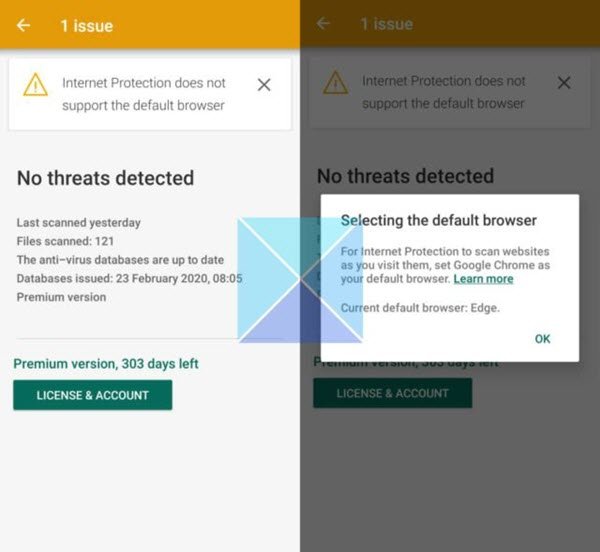Google Chrome single-handedly dominates the mobile browser market share worldwide. But as the saying goes, one man’s loss is another man’s gain, the same analogy seems to apply to mobile browser applications. Google Chrome’s usage has reached to an extent where it’s nearly impossible for any other player in the segment to beat its legacy.
Let’s see an example of Microsoft’s Edge web browser, which recently received a massive branding overhaul. If the StatCounter’s report is anything to go by, Microsoft Edge is not even among the top 8 mobile browser applications as far as the market share is concerned.

So the question arises, what could possibly be the reason behind the Edge’s sluggish or incompetent growth? There could be many reasons for it such as the strong demand for Google’s stock Android operating system that bundles the Chrome browser or the way Google Chrome is usually perceived as among the fastest mobile browsers by the masses, among others.
However, apart from that, another reason we believe has to be the lack of support for Microsoft Edge by some of the major security software and web protection tools. Now, it doesn’t mean that Edge is a less secure or inept mobile browser. In fact, it may be quite the opposite!
Let us explain! These days, ensuring our own safety and privacy on the Internet is of paramount importance. As a result, many users rely on antivirus and web protection tools. One of the possible reasons why Edge is not taking off is because major cybersecurity companies like Kaspersky don’t support the Edge browser.
Not all security companies support Edge browser on phones
For the last couple of days, we used Edge as the default web browser on an Android phone. Simultaneously, we also had Kaspersky Internet Security for Android running on the same device.

As you can see from screenshots, Kaspersky Total Security for Android does not scan websites on the Edge browser. In fact, Kaspersky also recommended us to use Google Chrome as our default browser instead of Microsoft Edge.
However, Edge is not the only browser excluded by Kaspersky’s web protection tool. In short, apart from Chrome, the Kaspersky web protection tool apparently doesn’t support any other mobile browser.
What is Kaspersky Web Protection Tool?
When enabled, Kaspersky’s web protection tool blocks malicious, untrustworthy websites that aim to steal the user’s private, confidential data or gain unauthorized access to their financial accounts.
This is what Kaspersky has to say on its support page:
“When it is enabled, Web Protection automatically checks which is the default browser. If Web Protection does not support the current default browser, Web Protection prompts you to change it to Chrome browser. To use Web Protection in real time while browsing the web, set Chrome browser as the default browser. If you do not want to change the current default browser, launch Chrome browser in order to use personal data on the Internet safely. You can start Chrome browser from Kaspersky Internet Security or from the app menu of the device. If Web Protection is enabled, it blocks phishing and malicious websites before they are opened.”
It seems like Kaspersky’s Internet protection tool rather directly or directly forces users into believing that Google Chrome is the only safest option out there. But does it also contribute to users’ reluctance to use Edge as their default browser? Since we are on the topic, we would be interested in hearing what Microsoft and Kaspersky have to say. Till then, safe browsing!
Leave a Reply